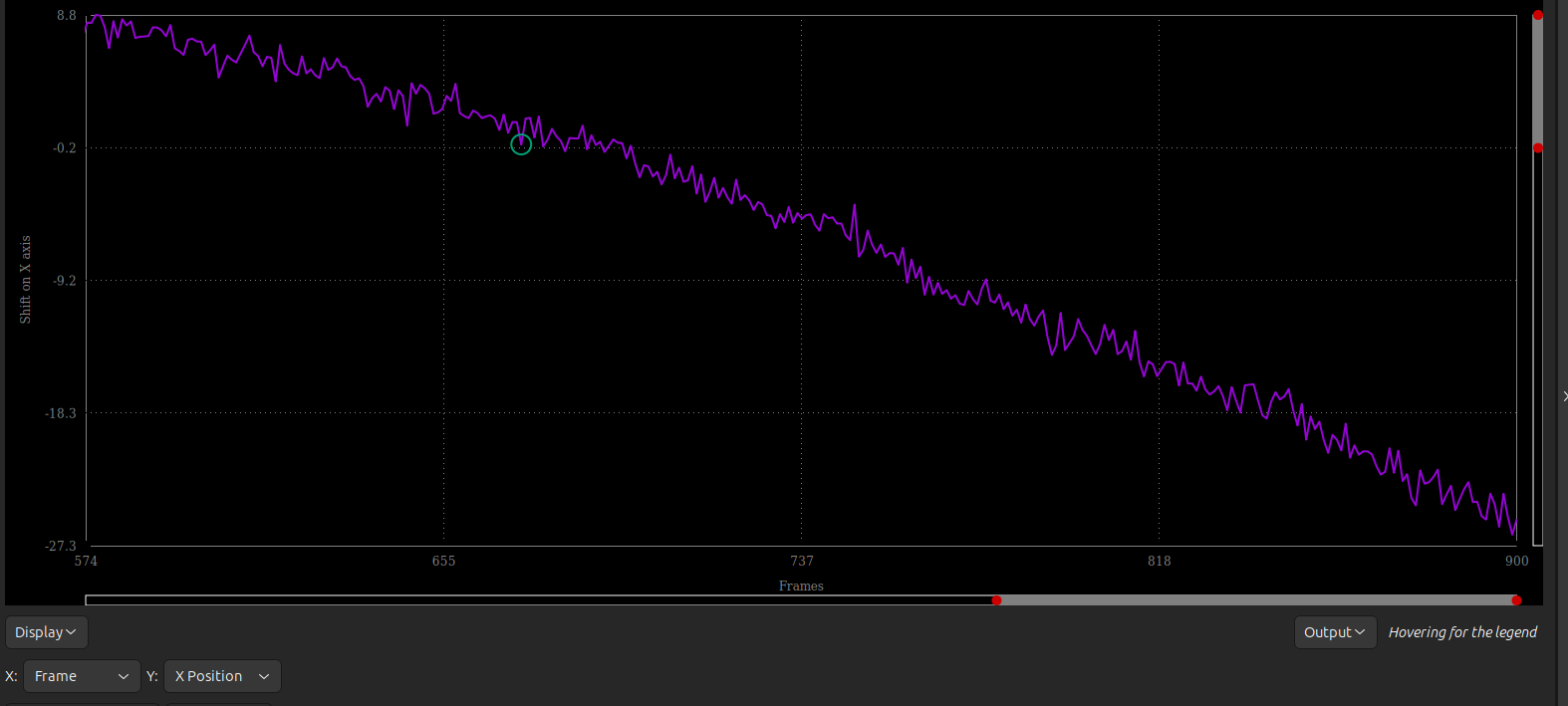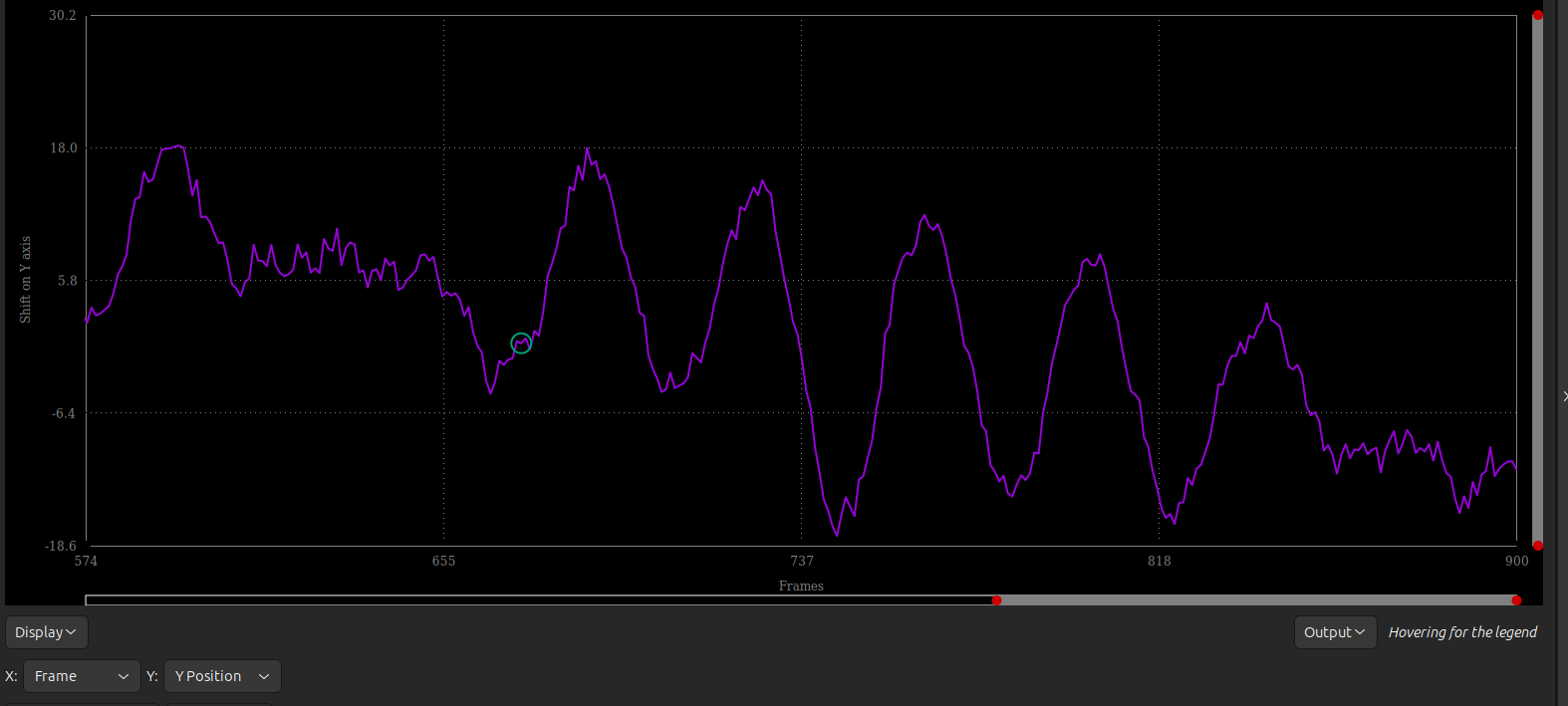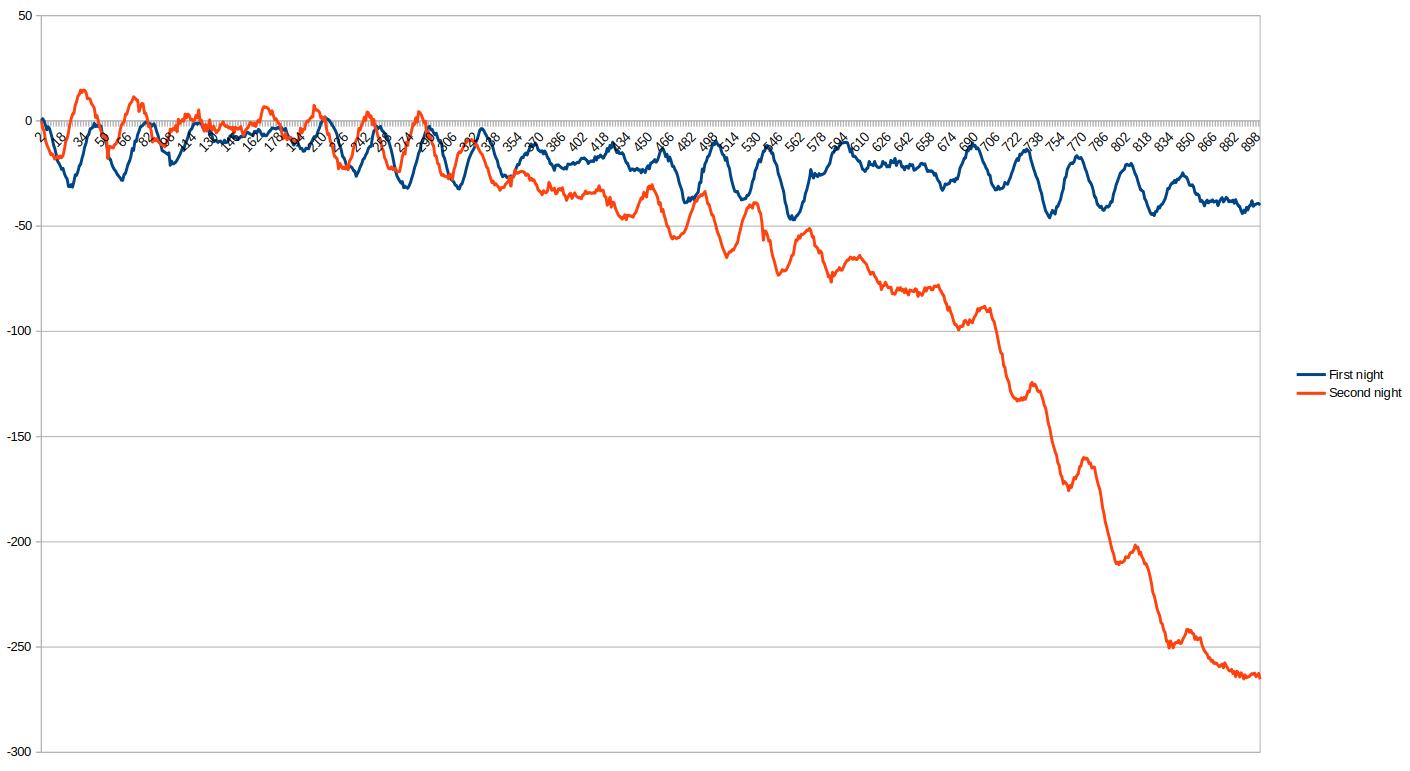Hey #astrophotography #astronomy , my Skywatcher Skyadventurer 2i has a noticeable "wobble" on the Y axis (RA I presume?) . Here I shoot @ 400mm , shutter-speed 15s . Is it normal or is my unit faulty? Or something I'm doing wrong?
Update on my periodic error issue: I did a second night trying a better arrangement for balance and... it didn't go well 😅
I believe that the collapse near the end is due to a worst polar alignment? I'm surprised I thought I did better than the first night.
It's strange that the "calm" periods are synchronous among the two nights, must be a coincidence?
(to try to make a better balancing I added a ball-head so more weight, seems it didn't helped)
Also worth checking for a cable snag, it might be that as the night progressed a cable was pulled taut, and that could easily vary between nights
@madjohnroberts I sure have lots (almost a thousand 😅) images of each night but I'm not sure what you'd like to check? I'm shooting at 15s so the impact on star shapes is minimal.
Not dragging your previous images at all (they are good!), but I do see evidence of polar misalignment in your M31 picture from a week ago. If you are using similar exposure times, I think we'll see any alignment problems
Yeah I'll try to balance it better, there's way of improvement here with the body being offset to the left and the lens protruding...
(yeah pretty consistent and not guiding)
@pleiotrope well I'd like to increase the exposure time. Have been used to shoot at 30s, tried 60s but noticed the stars weren't even trying to look round anymore 😅 .
I've never seen a benefit when I've tried to drizzle but maybe I'm doing it wrong?
And yeah… technically drizzle requires random offsets in both RA and DEC for best results, so I never bothered when using star tracker type mounts. It *might* reduce the noise from the color array on your sensor, maybe?
(someone on Reddit says it's to be expected with a Skyadventurer, nothing out of the ordinary...)
bonfire.cafe
A space for Bonfire maintainers and contributors to communicate


